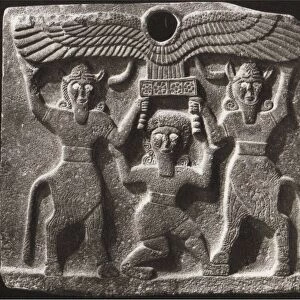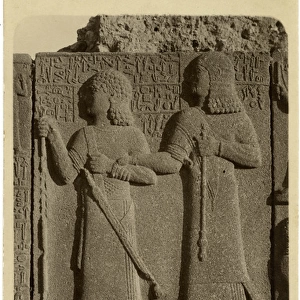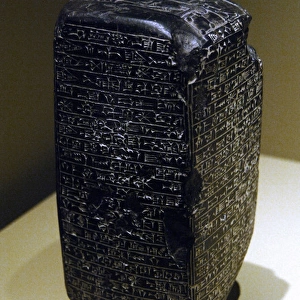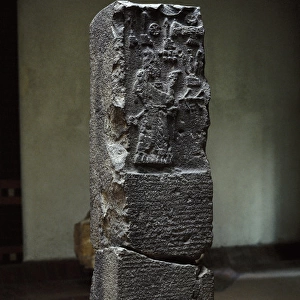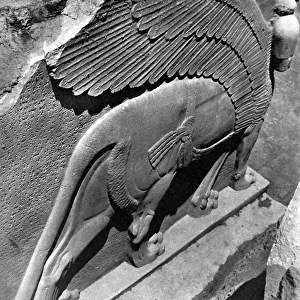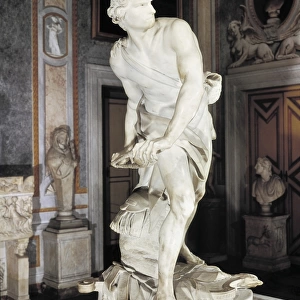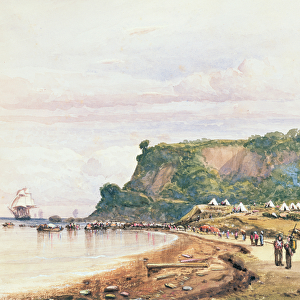Home > Europe > United Kingdom > England > London > Sights > British Museum
Neo-Assyrian Art. Gypsum tile from a domestic shrine
![]()

Wall Art and Photo Gifts from Mary Evans Picture Library
Neo-Assyrian Art. Gypsum tile from a domestic shrine
Neo-Assyrian Art. Gypsum tile from a domestic shrine depicting a man in Assyrian court dress that is worshipping a god, perhaps Ninurta. The symbols at the top represent Shamash the sun god, Sin the moon god, and Ishtar the goddess of the planet Venus. Dated 800-700 B.C. British Museum. London. United Kingdom
Mary Evans Picture Library makes available wonderful images created for people to enjoy over the centuries
Media ID 14378670
© Thaliastock / Mary Evans
Assyrian Goddess Gypsum Ishtar Moon Mythology Neo Assyrian Planet Sculpted Venus Ninurta Shamash
FEATURES IN THESE COLLECTIONS
> Europe
> United Kingdom
> England
> London
> Museums
> British Museum
> Europe
> United Kingdom
> England
> London
> Sights
> British Museum
EDITORS COMMENTS
1. Title: A Reverent Worshipper before the Celestial Triad: A Neo-Assyrian Gypsum Tile Depiction from a Domestic Shrine 2. This gypsum tile, hailing from the Neo-Assyrian period (800-700 BC), showcases an intricately sculpted scene from a domestic shrine. The central figure is a man, dressed in the traditional attire of the Assyrian court, who is deeply engrossed in a reverent act of worship. He is believed to be paying homage to the powerful triad of Neo-Assyrian deities: Ninurta, Shamash, and Ishtar. 3. Ninurta, the god of agriculture, hunting, and war, is often depicted as a strong, muscular figure, holding a mace and a bow. In this tile, he is shown in a more contemplative pose, with his hands folded in prayer. The man's devotion to Ninurta is evident in the intense focus on his face and the respectful posture of his body. 4. The celestial triad of Shamash, Sin, and Ishtar is depicted at the top of the tile. Shamash, the sun god, is symbolized by a radiant solar disk, while Sin, the moon god, is represented by a crescent moon. Ishtar, the goddess of love, fertility, and war, is depicted as a woman, holding a star and a lion, symbolizing her connection to both the heavens and the earth. 5. The symbols of these deities were essential elements of Neo-Assyrian mythology, and their presence in domestic shrines underscores the deep-rooted belief in their power and protection. This gypsum tile, now housed at the British Museum in London, offers a unique glimpse into the religious practices and beliefs of the ancient Assyrian civilization. 6. The intricate details of the sculpted relief, with its delicate lines and precise execution, testify to the advanced artistic skills of the Neo-Assyrian artisans. This tile is a testament to the rich cultural heritage of ancient Mesopotamia and the enduring influence of its mythology on human civilization.
MADE IN AUSTRALIA
Safe Shipping with 30 Day Money Back Guarantee
FREE PERSONALISATION*
We are proud to offer a range of customisation features including Personalised Captions, Color Filters and Picture Zoom Tools
SECURE PAYMENTS
We happily accept a wide range of payment options so you can pay for the things you need in the way that is most convenient for you
* Options may vary by product and licensing agreement. Zoomed Pictures can be adjusted in the Cart.



